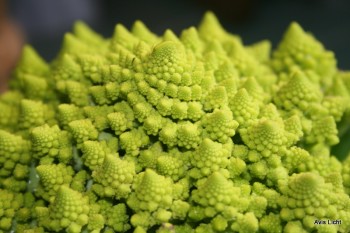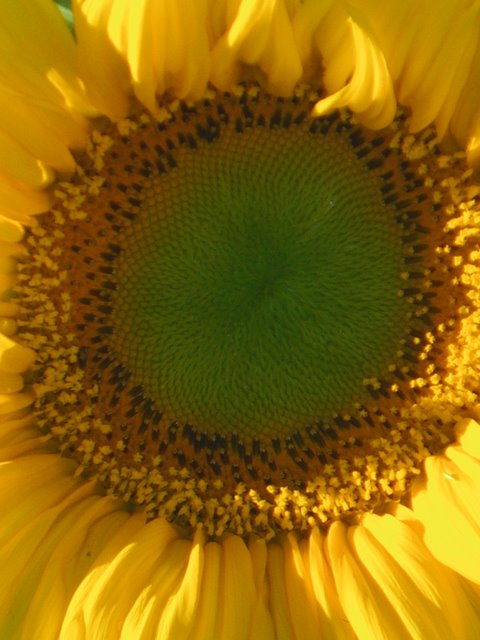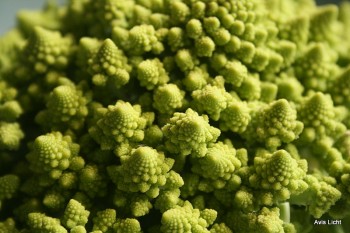by Avis Licht
Fractals and the fibonacci sequence – two of natures amazing design schemes. Here they are demonstrated beautifully in the Romanesco cauliflower.
A fractal is a geometric pattern that is repeated at ever smaller scales to produce irregular shapes and surfaces that cannot be represented by classical geometry.
To understand more about fractals and biomimicry read this article in Livescience. Biomimicry looks to nature and natural systems for inspiration. After millions of years of tinkering, Mother Nature has worked out some effective processes. In nature, there is no such thing as waste — anything left over from one animal or plant is food for another species. Inefficiency doesn’t last long in nature, and human engineers and designers often look there for solutions to modern problems.
For more on the Fibonacci Sequence in nature read this: Fibonacci in Nature.
I harvested this head of cauliflower today, February 16th. It’s been a cold and dry winter. But this beauty carried on and turned into a wonderful head. The brassica family is a sturdy and incredibly healthy food. I found this article on the Brassicas and their nutrient value to be eye opening. It will make you a believer.
If you live in a moderate climate, it’s time to start thinking about sowing your seeds for broccoli, cauliflower, bok choy and the other brassicas. I wrote about seed starting in this post: Starting Seeds in your Edible Landscape.
To find out which Hardiness Zone you live in click here. See if it’s time for you to start getting your Brassicas, otherwise known as the cabbage family, into the garden.
When choosing plants for your edible landscape, it’s good to consider unusual varieties like this Romanesco Cauliflower. They look beautiful, are easy to grow and taste wonderful. And your friends will ask, “What in the hell is that?”
You will find my ebook, the Spring Garden Made Easy, a straight forward guide to getting your garden going and growing.




